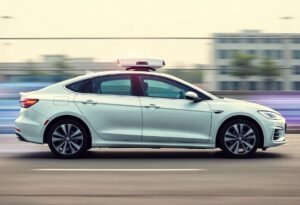The integration of augmented reality (AR) into smart city planning and infrastructure is a transformative innovation that reshapes urban living. As cities worldwide continue to evolve, AR presents unique possibilities for enhancing the interaction between citizens and their environments.
Enhancing Urban Mobility Through Augmented Reality
One of the most significant benefits of augmented reality in smart cities is its potential to improve urban mobility. By overlaying digital information onto the real world, AR can assist commuters in navigating complex transportation systems. For example, city planners can use AR to provide real-time updates about bus and train schedules, allowing individuals to make informed travel decisions quickly.
Augmented Reality in Urban Planning and Development
In urban planning, AR tools allow planners and architects to visualize potential developments before they are constructed. By employing augmented reality, stakeholders can simulate how new buildings will impact the skyline and interact with existing architecture. This can lead to more informed decisions, better resource allocation, and increased community engagement during the planning stages.
Improving Public Safety with Augmented Reality
Public safety is another crucial area where augmented reality plays a role in smart cities. Emergency services can utilize AR for rapid assessments of incident scenes, enabling professionals to view relevant information layered over their surroundings. This enhances situational awareness and can lead to faster response times during emergencies, fostering a safer urban environment.
Augmented Reality for Environmental Awareness
AR technologies can also help to raise awareness about environmental issues within urban settings. Interactive applications can educate citizens on energy conservation, pollution levels, and local flora and fauna. By visualizing these data points through AR, residents may become more engaged with their community’s sustainability efforts and take active steps toward environmental health.
Creating Interactive Citizen Engagement Platforms
Smart cities can leverage augmented reality to develop engaging platforms for citizen participation. By using AR, local governments can create interactive experiences where citizens can visualize proposed changes to their neighborhoods. This not only boosts community interest but also provides individuals with a sense of ownership over local developments.
The Future of Smart Cities and Augmented Reality
As technology advances, the role of augmented reality in smart cities is likely to evolve further. Innovations in AR could lead to smarter applications that integrate seamlessly with other urban technologies. This interconnectedness can drive the overall growth of smart cities, emphasizing the importance of collaboration between technology developers and urban planners.
Disclaimer: This article is for informational purposes only and does not constitute professional advice.





















